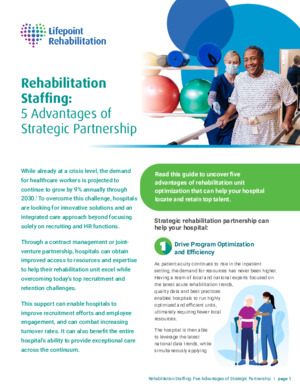Narconon Africa Fundamentals Explained
Narconon Africa Fundamentals Explained
Blog Article
More About Narconon Africa
Table of ContentsThe Facts About Narconon Africa UncoveredSome Known Incorrect Statements About Narconon Africa Getting The Narconon Africa To WorkSome Ideas on Narconon Africa You Should KnowSome Known Incorrect Statements About Narconon Africa The Best Strategy To Use For Narconon AfricaThe Of Narconon Africa
In a collection of documents with Manudeep Bhuller and Katrine V. Lken, we conquer these data challenges and the nonrandomness of imprisonment, supplying brand-new insights right into how incarceration impacts recidivism, work, children, and criminal networks - Comprehensive rehab services. Number 1 Our work research studies the results of incarceration in Norway, a setting with 2 vital advantagesWe can even more link this information to other relative, including children and brother or sisters. Furthermore, we know on co-offending that allows us to draw up criminal networks for observed criminal offenses. Second, we can leverage the arbitrary job of criminal situations to judges that differ in their propensities to send out offenders to prison.
But some judges send out accuseds to prison at a high rate, while others are more lenient. We measure a court's stringency as the average imprisonment rate for all various other situations a court handles, after regulating for court and year fixed impacts, which is the level of random task. This quasi-random task of judge stringency can be utilized as a tool for incarceration, as it highly forecasts the court's decision in the present case, yet is uncorrelated with other case attributes both by design and empirically.
The Main Principles Of Narconon Africa
Attributes of prisoners, consisting of demographics and criminal offense categories, are generally similar in Norway and various other countries, including the United States, with the exemptions that the United States murder price is much higher, and race plays a larger role there. What attracts attention as different, particularly compared with the USA, is the prison system.
Number 2In Norway, the typical time invested behind bars is a little over six months, which is similar to most other Western European nations. This contrasts with typical United States jail time of almost 3 years, which is in huge component the reason the USA is an outlier in its imprisonment rate contrasted with the remainder of the globe [Figure 1]
Fascination About Narconon Africa
This offers far more splitting up between minor and hard criminals than exists in the USA. There is no overcrowding in Norwegian prisons and far better personal security, with each prisoner being designated to their very own cell and a higher inmate-to-staff proportion than in the USA (https://www.anyflip.com/homepage/wzegw). Prisons in Norway likewise supply well-funded education and learning, drug treatment, psychological health, and work training programs
Our research on the results of incarceration on the offender, using the arbitrary task of judges as a tool, yields 3 essential searchings for. Initially, jail time discourages further criminal actions. We locate that imprisonment reduces the possibility that an individual will certainly reoffend within five years by 27 percent points and lowers the matching number of criminal costs per individual by 10 fees.
All About Narconon Africa
We find substantial decreases in reoffending possibilities and collective charged crimes even after offenders are launched from jail. Our 2nd outcome is that bias due to selection on unobservable individual characteristics, if ignored, causes the wrong conclusion that time spent in prison is criminogenic. If we simply compare criminal offenders sent to prison versus those not imprisoned, we locate positive associations in between imprisonment and subsequent criminal activity.
This stands in contrast to our evaluation based upon the arbitrary assignment of judges, which discovers an opposite-signed outcome. Third, the reduction in criminal offense is driven by individuals who were not working prior to incarceration. Among these individuals, imprisonment enhances involvement in programs guided at improving employability and reducing recidivism, and this eventually increases work and incomes while inhibiting criminal actions.

Imprisonment creates a 34 percent factor boost in participation in task training programs for the previously nonemployed, and within 5 years their employment rate rises by 40 percent points. At the very same time, the chance of reoffending within 5 years is reduced by 46 percent points, and there is a decline of 22 in the average variety of criminal costs.
Narconon Africa for Dummies

A plausible description for the distinction is that Norway's jail system varies substantially, both in regards to prison-term length and prison conditions, from the United States jail system. While understanding the impacts of incarceration on the wrongdoer is a crucial very first step, capturing spillover results is additionally essential for assessing criminal justice plan and developing efficient prison systems.
Rumored Buzz on Narconon Africa

Regular least squares estimates reveal that kids of incarcerated dads are 1 portion factor more probable to be billed with a crime, relative to a mean of 13 percent, and reveal no impact on institution qualities. Using our court stringency instrument, we find no statistical proof that a papa's incarceration affects a kid's own crime or school grades, yet we are unable to dismiss modest-sized effects.
7 Easy Facts About Narconon Africa Described
We define criminal groups based on you can find out more network web links to previous criminal instances. Our evaluation yields three primary searchings for. Initially, when a criminal network member is incarcerated, their peers' chance of being billed with a future crime lowers by 51 portion factors over the following four years. Similarly, having an older sibling jailed lowers the possibility his more youthful brother will be charged with a crime by 32 percentage points over the following four years.
Report this page